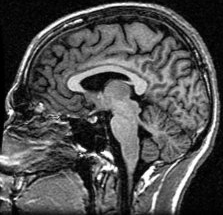Joint Colloquium Distinguished Lecture Series
A Compressed Tour of Compressed Sensing for Rapid Magnetic Resonance Imaging
 |
Wednesday, October 21, 2009 |
Abstract:
Magnetic Resonance Imaging (MRI) is a non-invasive imaging modality. Unlike Computed Tomography (CT), MRI does not use ionizing radiation. In addition, MRI provides a large number of flexible contrast parameters. These provide excellent soft tissue contrast. Since its invention more than 30 years ago, MRI has improved dramatically both in imaging quality and speed. This has revolutionized the field of diagnostic medicine. Imaging speed is a major part of this revolution as it is essential in many MRI applications. Improvements in MRI hardware and imaging techniques have enabled faster data collection, and hence faster imaging. However, we are currently at the point where fundamental physical and physiological effects limit our ability to simply encode data more quickly.
This fundamental limit has led many researchers to look for methods to reduce the amount of acquired data without degrading the image quality. These reduced sampling methods are based on the fact that MRI data is redundant, so the underlying information may be extracted from less data than traditionally considered necessary. One of the most significant clinical impacts of reduced sampling methods has been accomplished by parallel imaging with multiple receiver channels. Imaging with multiple channels provides more useful data per MRI acquisition, so fewer acquisitions are needed per scan.
Another source of redundancy that has been gaining significant attention is the sparsity and compressibility of various MR signals. This effort has been motivated by the recent introduction of the theory of compressed sensing (CS). Compressed sensing implicitly compresses data within the signal acquisition process by obtaining fewer so-called "incoherent measurements". This is accomplished through various randomized k-space sampling schemes. Images can be accurately reconstructed from these measurements using non-linear recovery processes. The practical result of CS in the context of MRI is that MR images require much less data for reconstruction.
This talk is meant for the general audience and will cover some of the basic concepts of Magnetic Resonance Imaging, Compressed Sensing and the application of Compressed Sensing to MRI. The talk will also review some of the work done to improve MRI diagnostics of pediatric patients, where rapid imaging is crucial to minimize motion artifacts and to reduce the use of anesthesia in patients.
Biography
Michael (Miki) Lustig is a newly appointed Assistant Professor in EECS. He will join the faculty in Spring 2010. He received his Bsc in Electrical Engineering from the Technion, Israel Institute of Technology in 2002. He received his Msc and PhD in Electrical Engineering from Stanford University in 2004 and 2008 respectively. His research focuses on medical imaging, in particular Magnetic Resonance Imaging (MRI). More specifically, the application of compressed sensing to rapid and high-resolution MRI, MRI pulse sequence design, medical image reconstruction, inverse problems in medical imaging and sparse signal representation.
Michael's work in the past couple of years has focused on developing methods for transforming pediatric MRI into a safe, broadly available, reliable diagnostic tool.
| Return to EECS Joint Colloquium |

